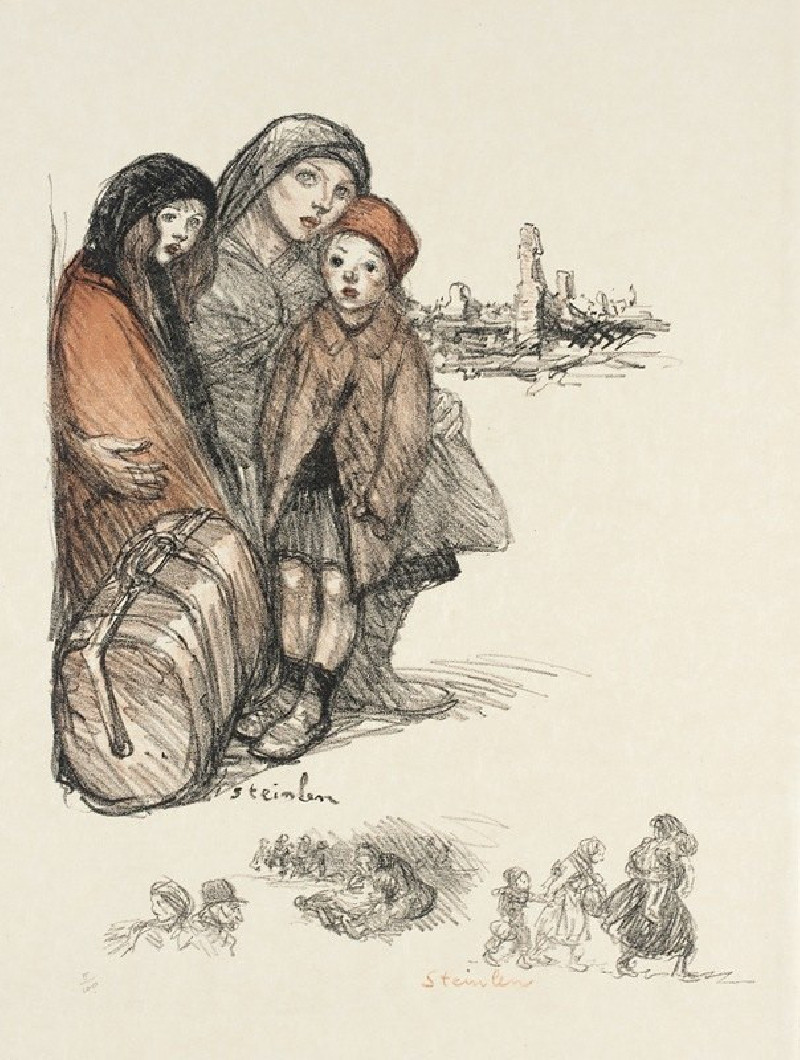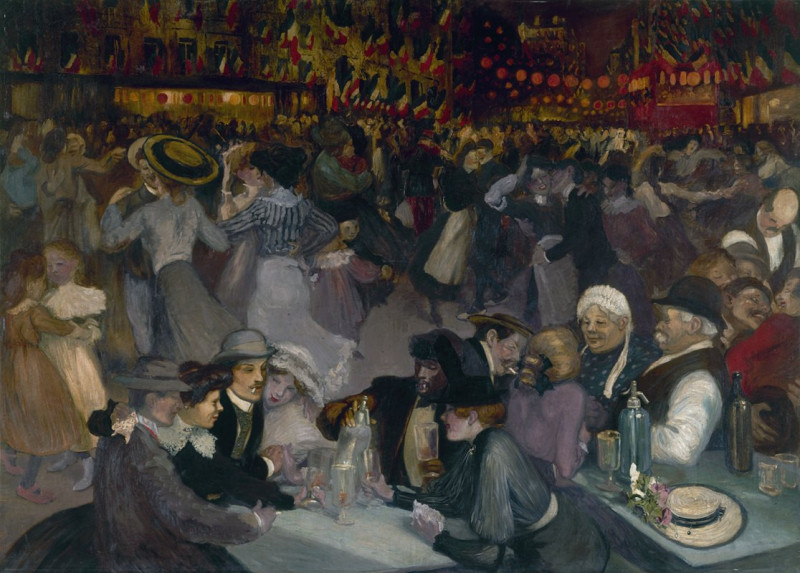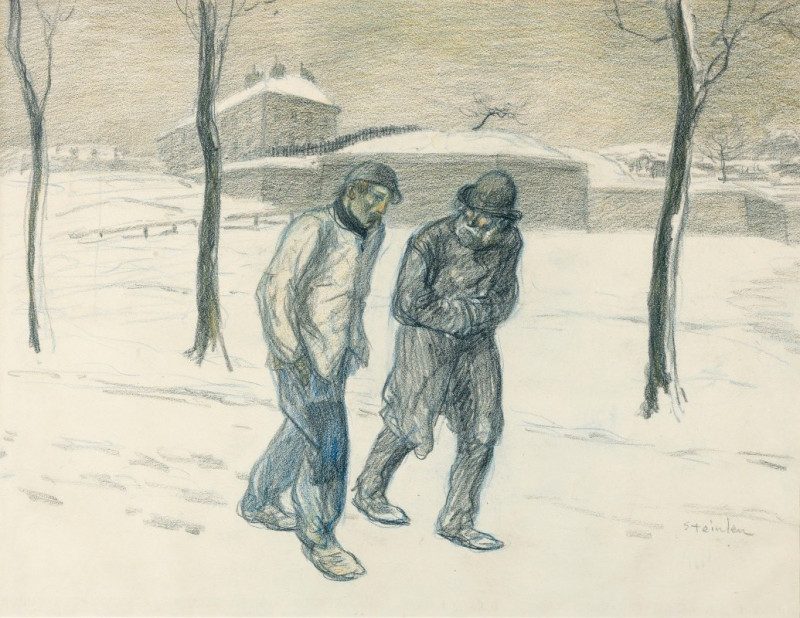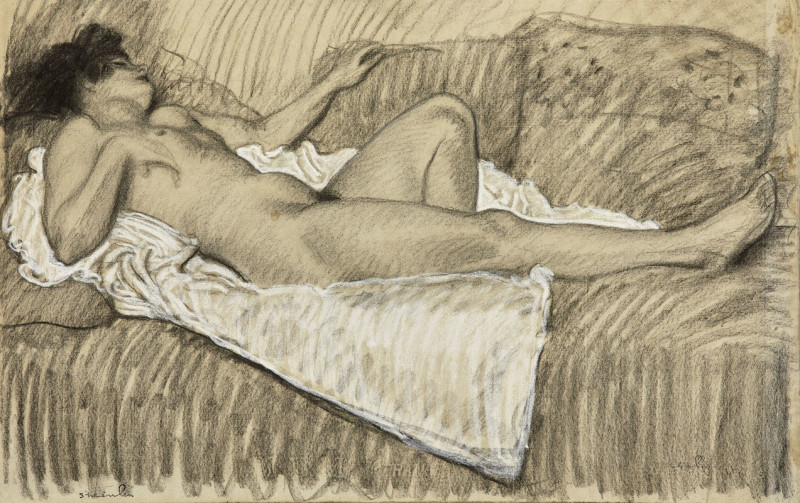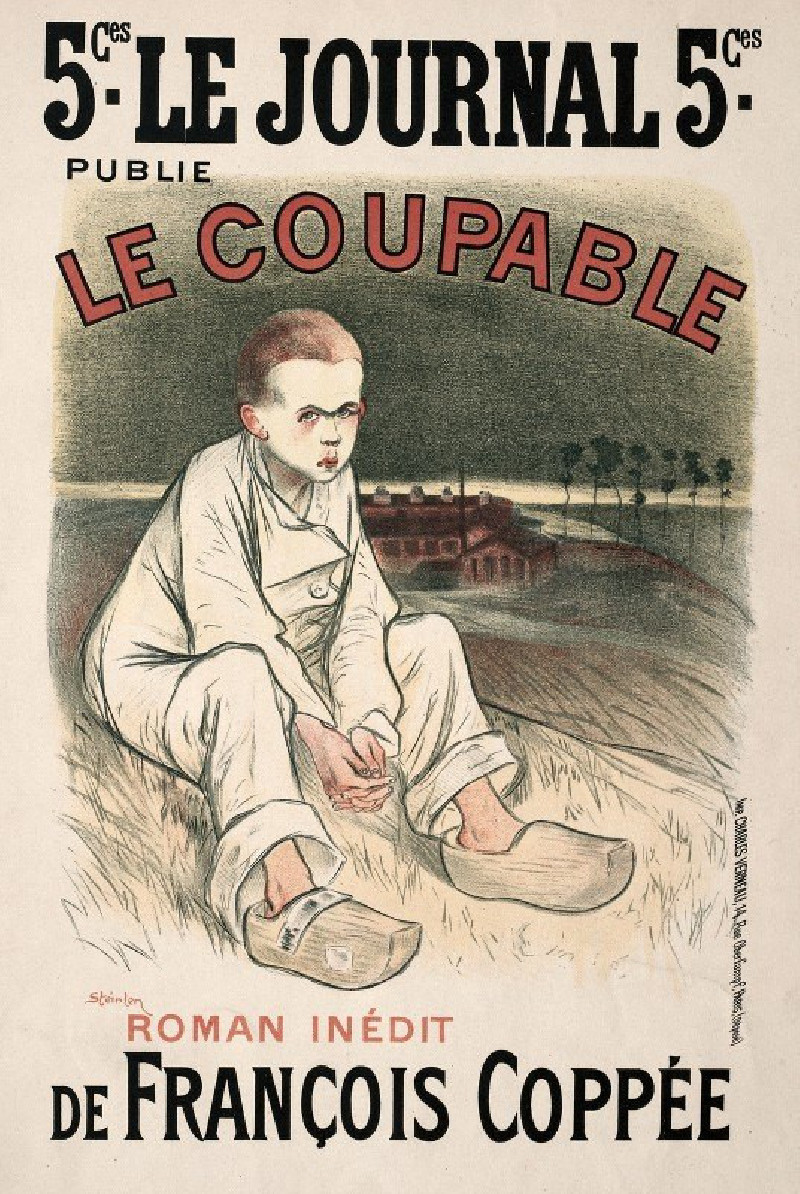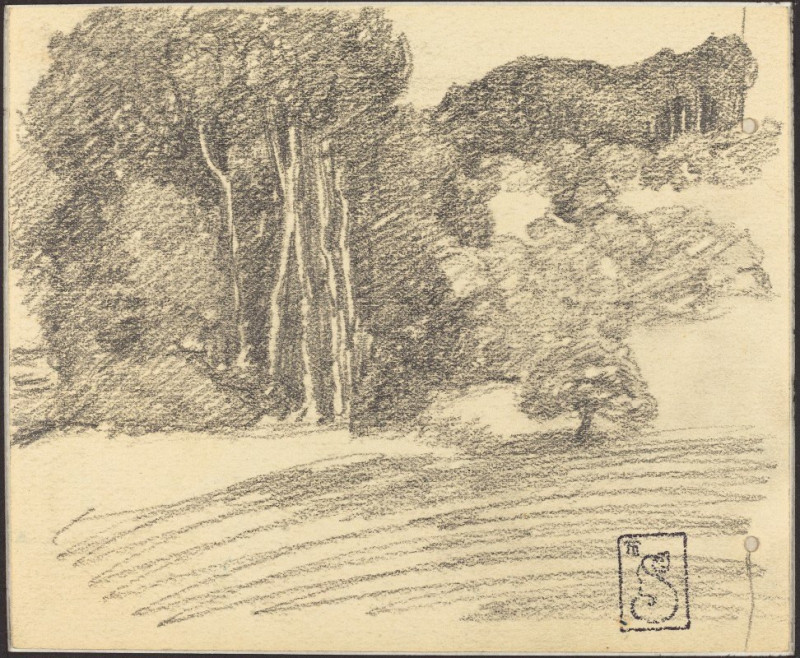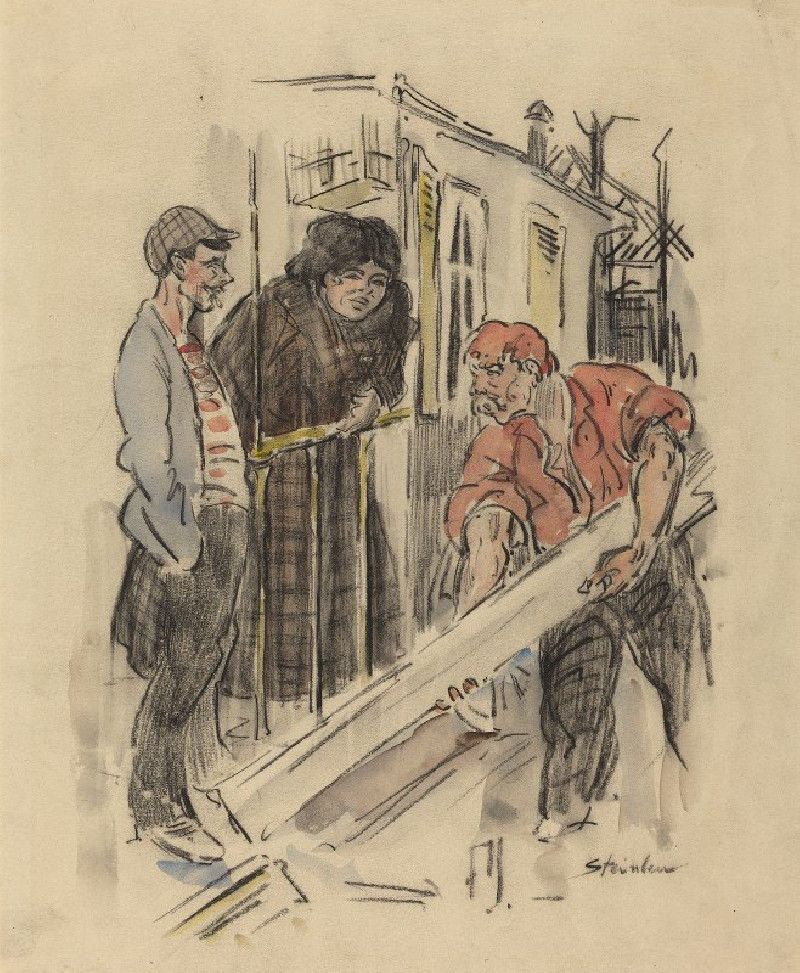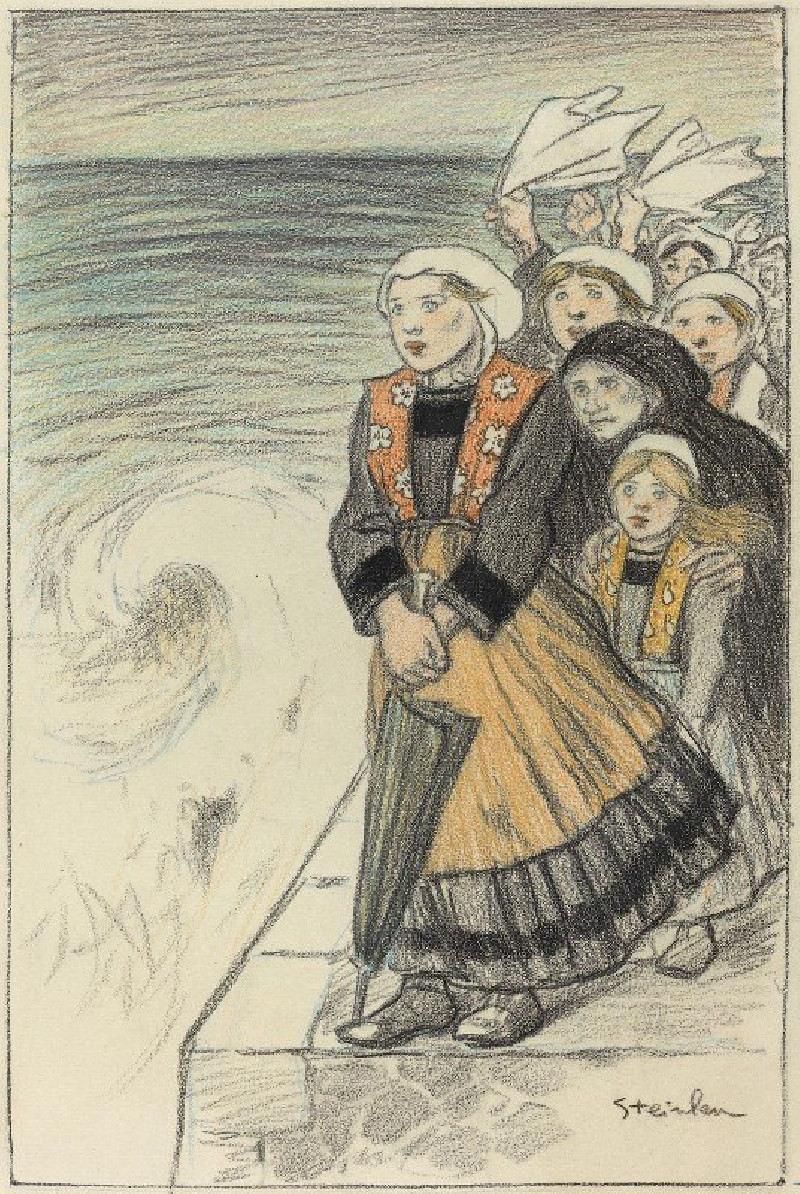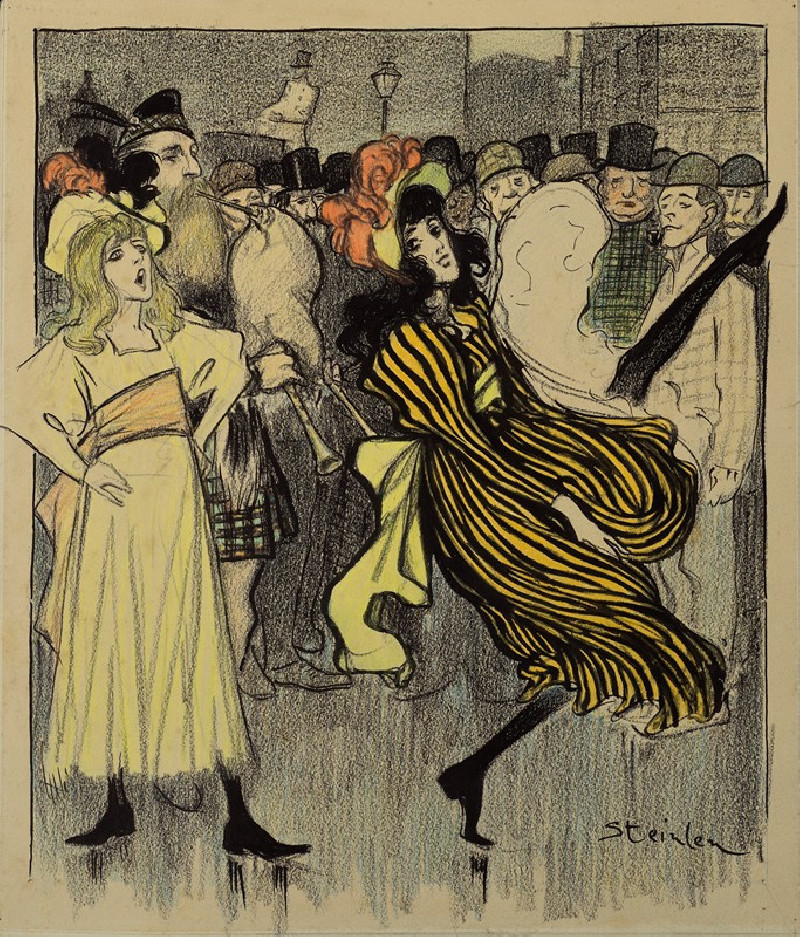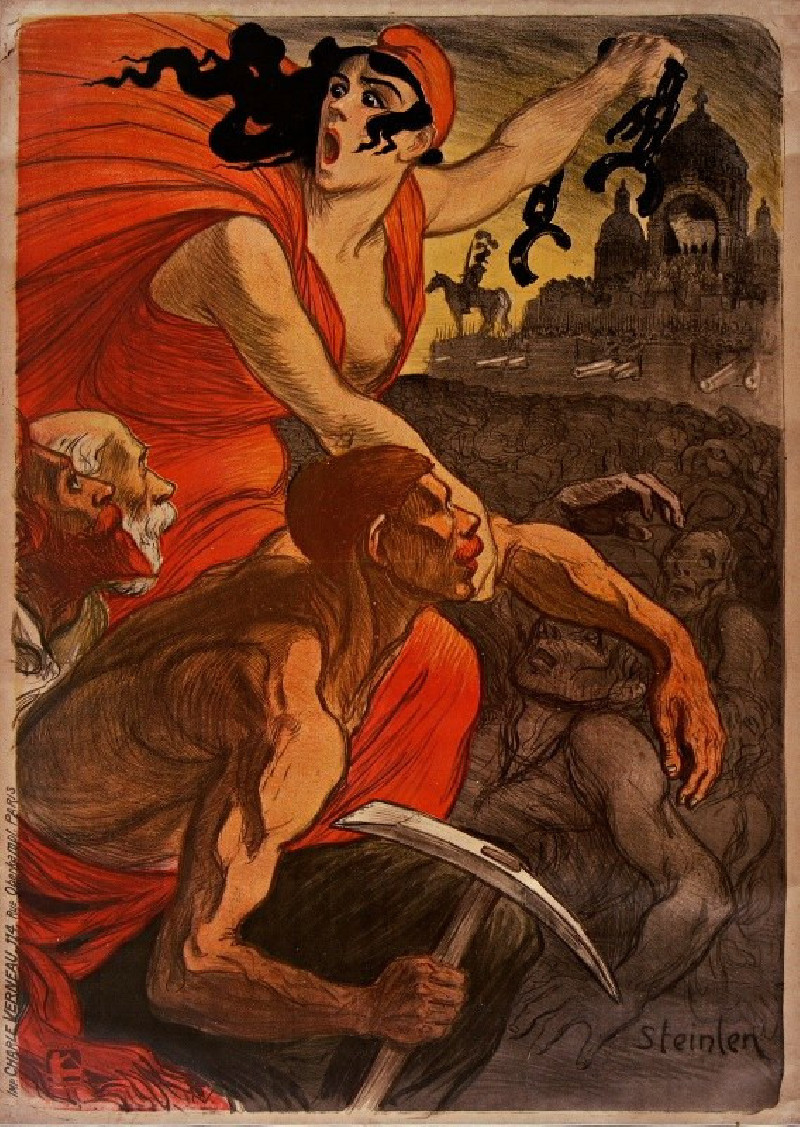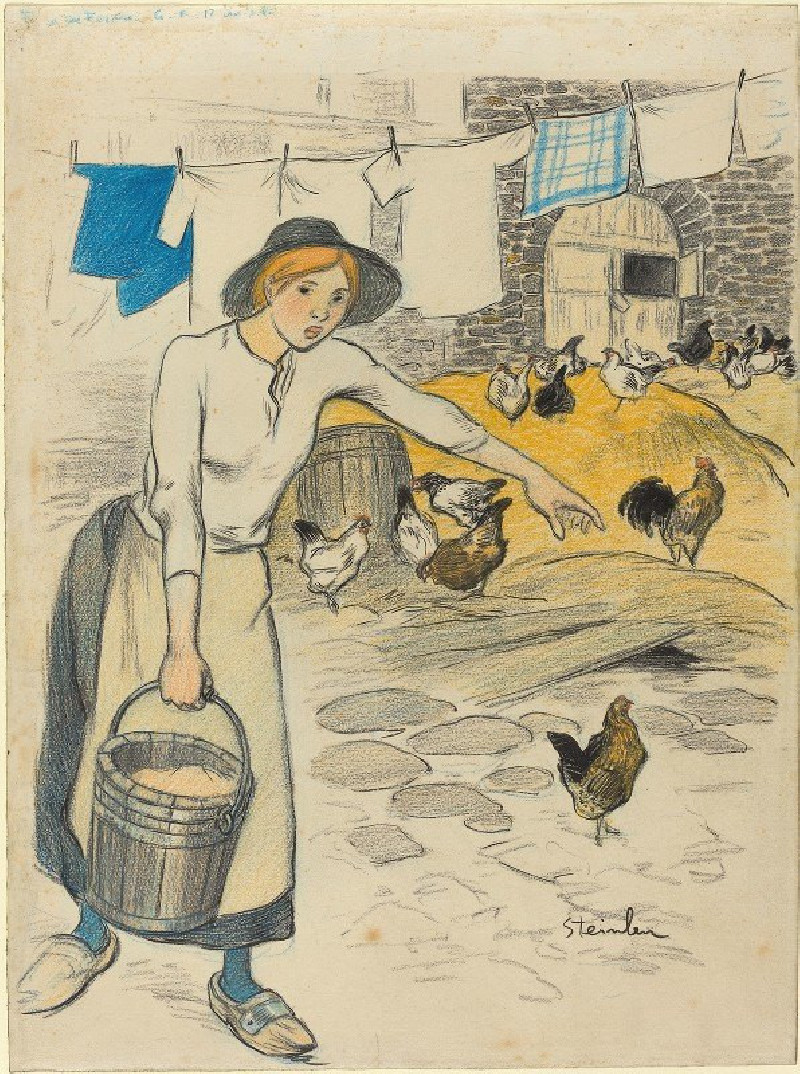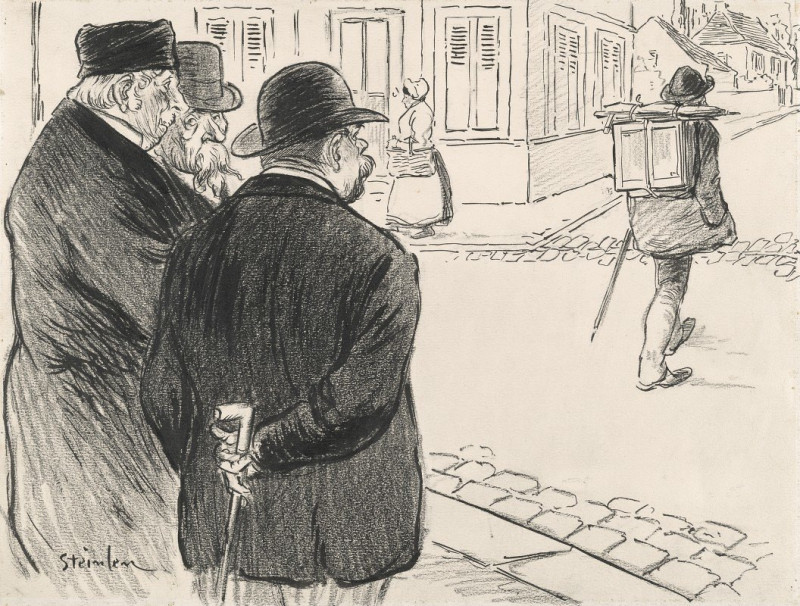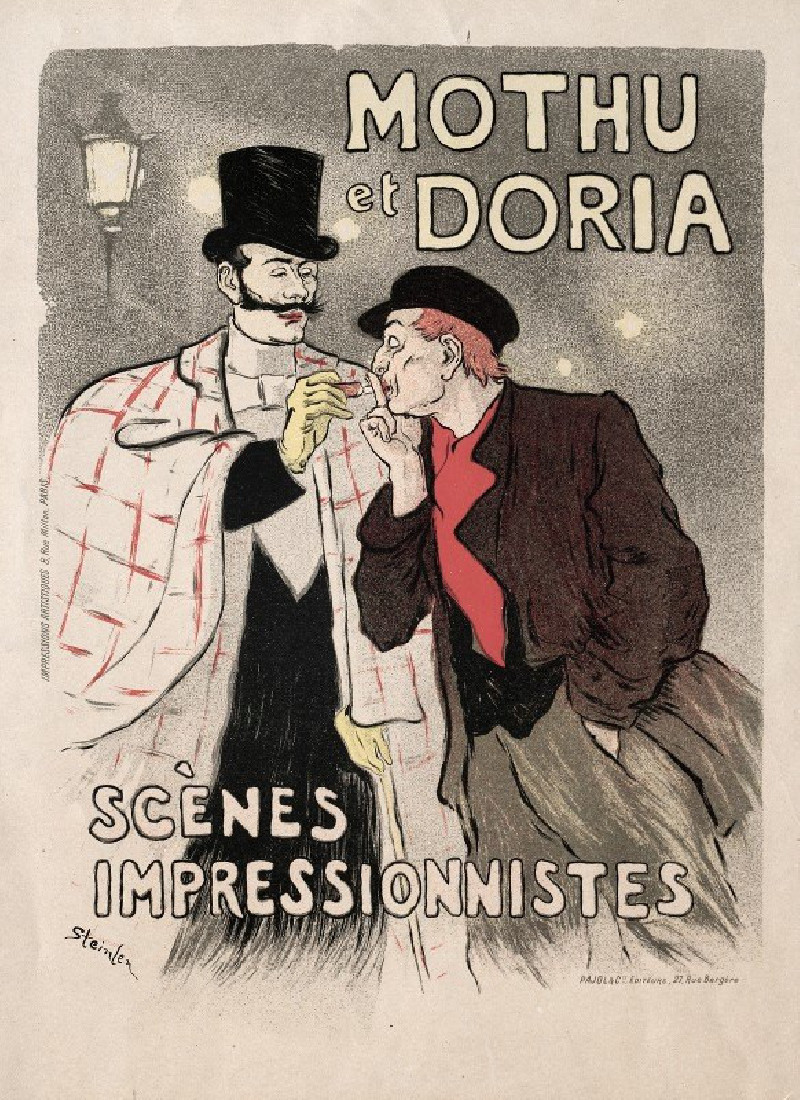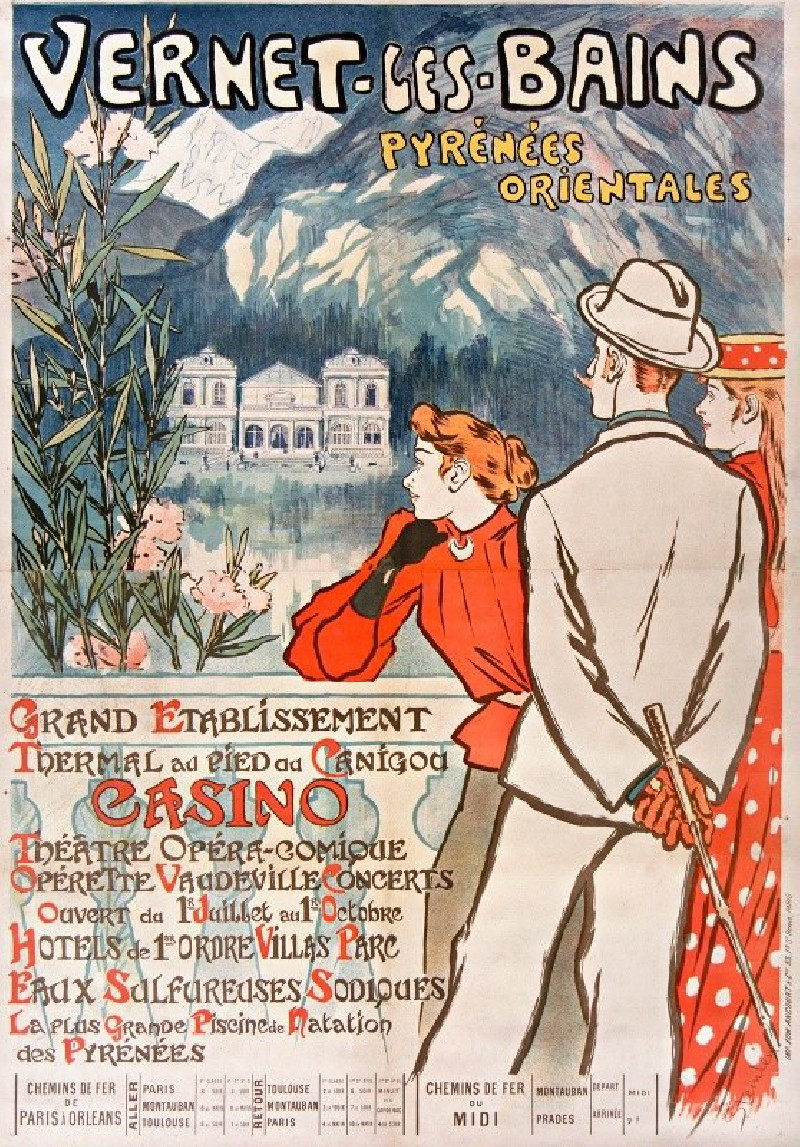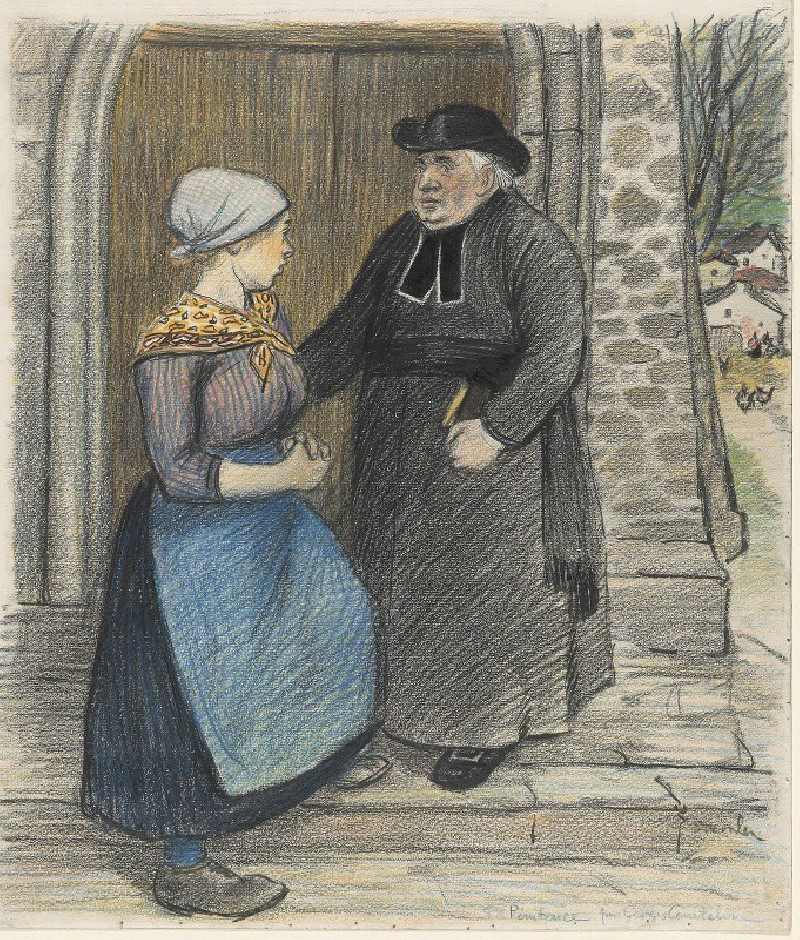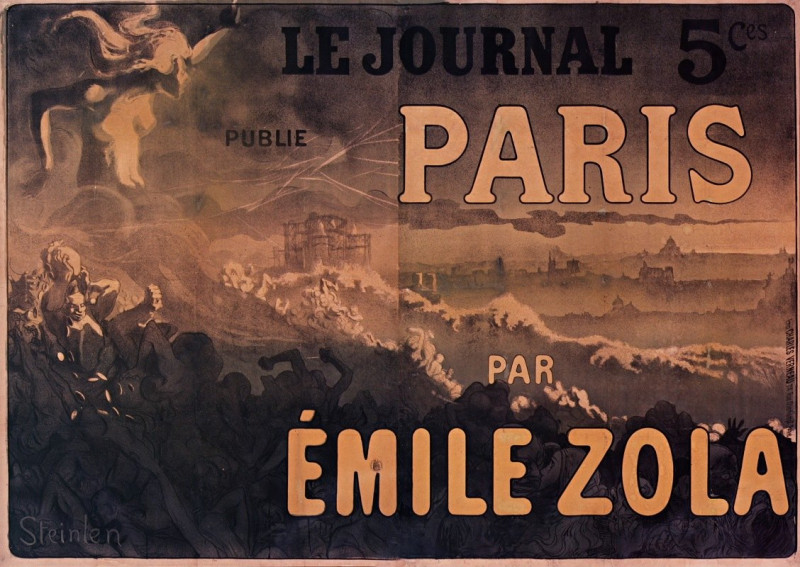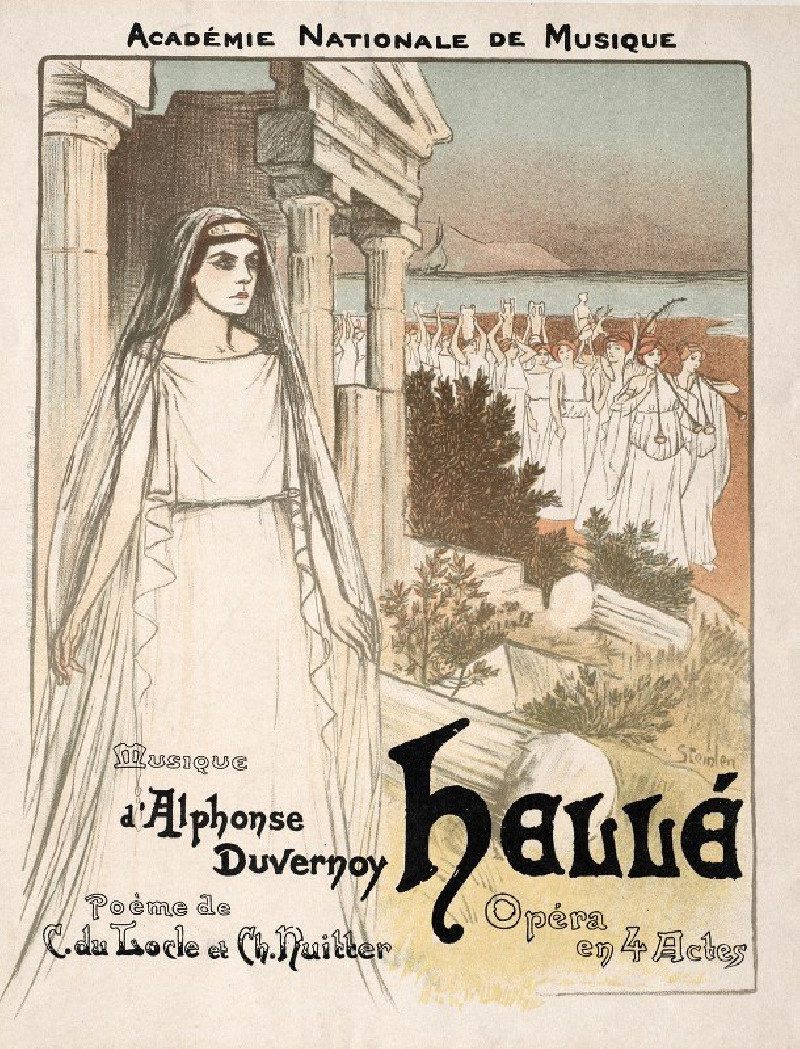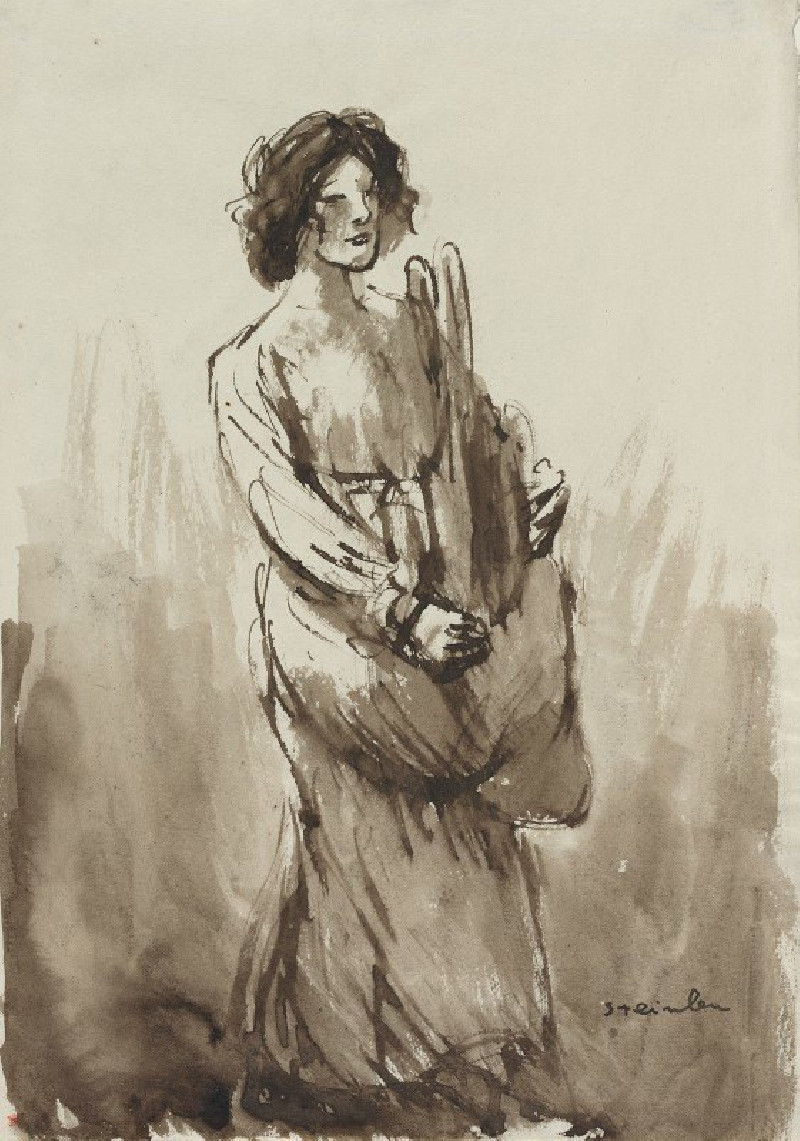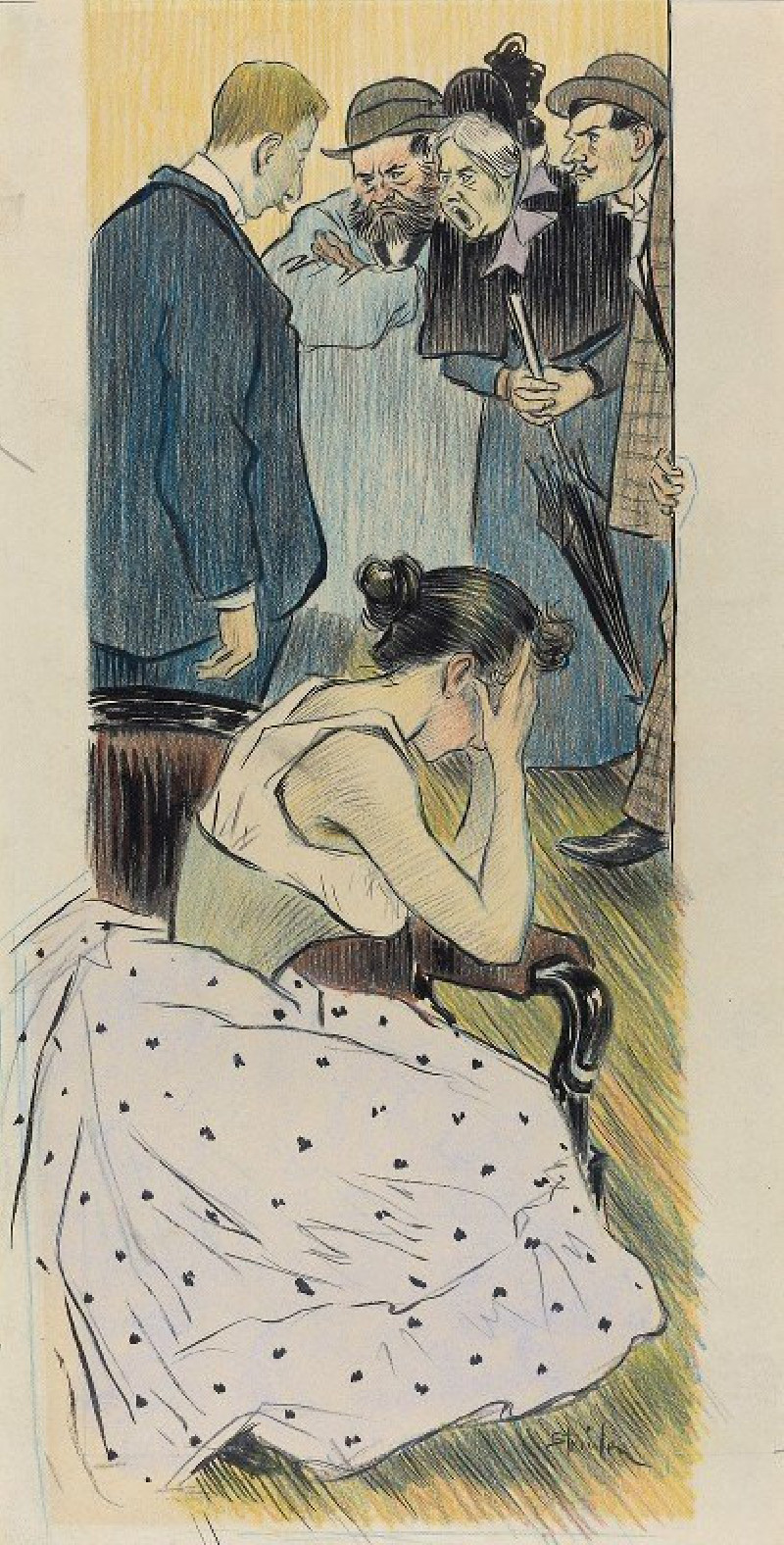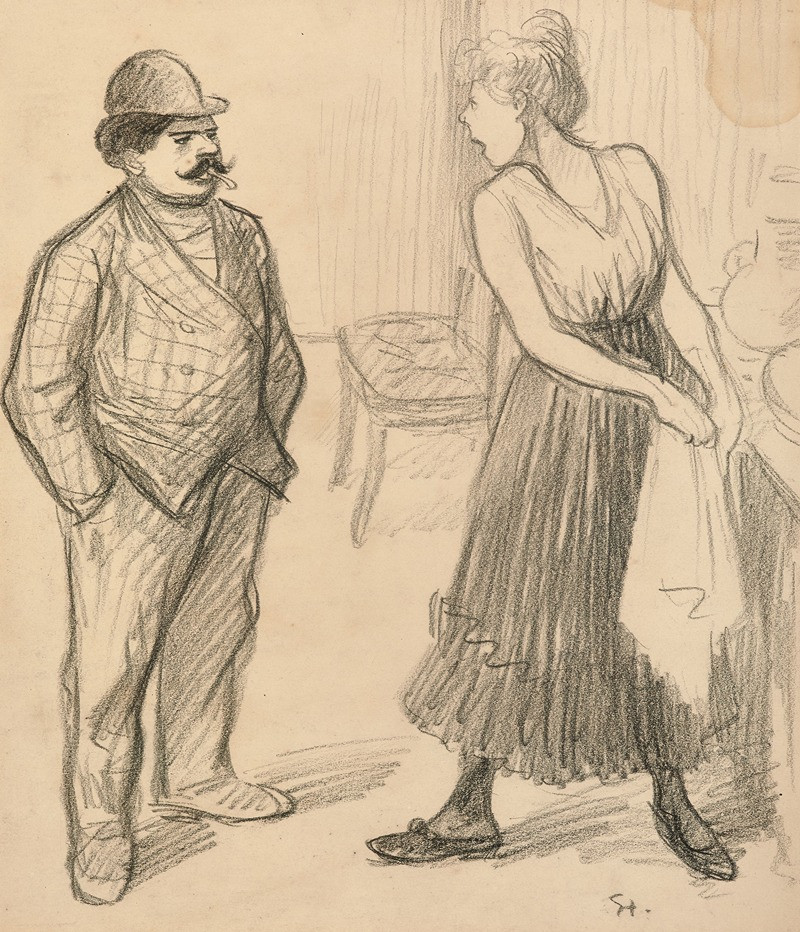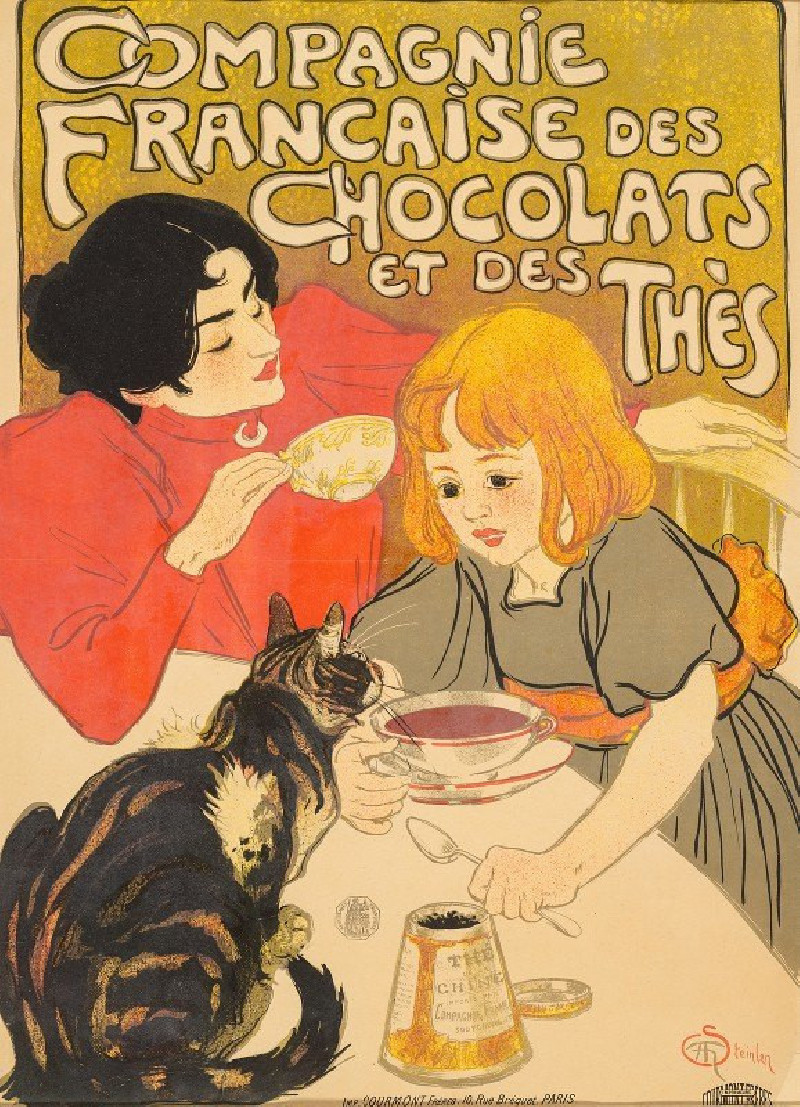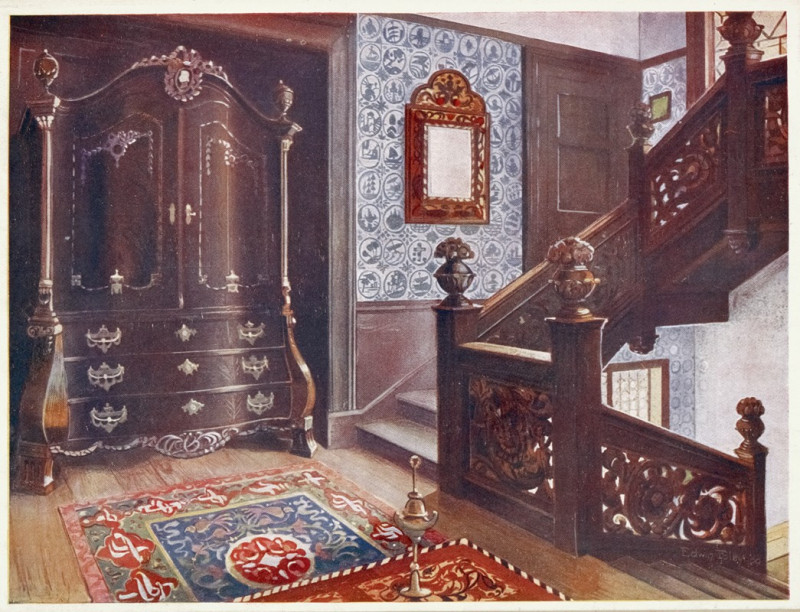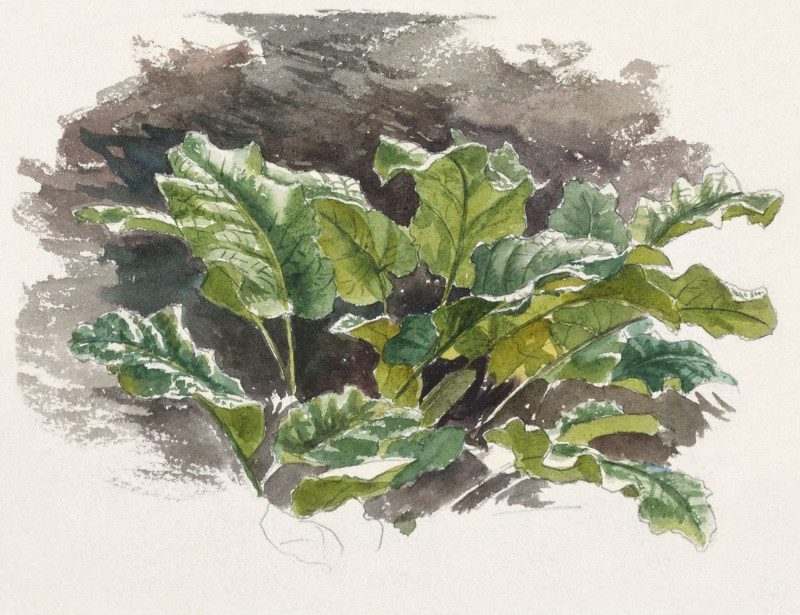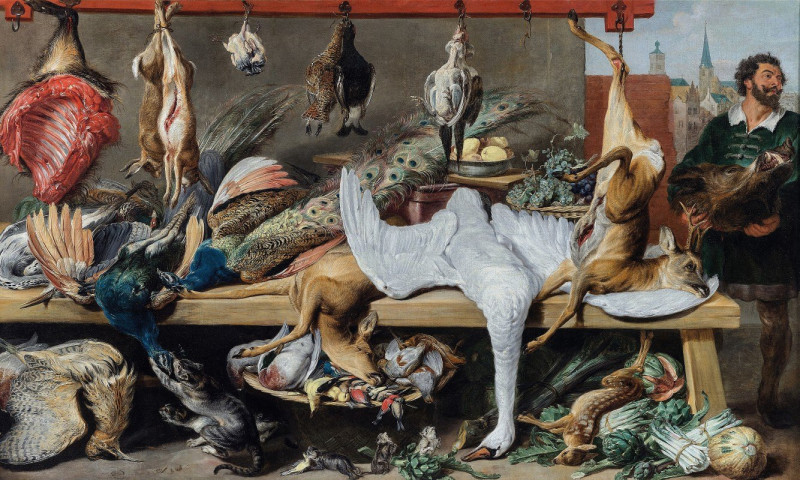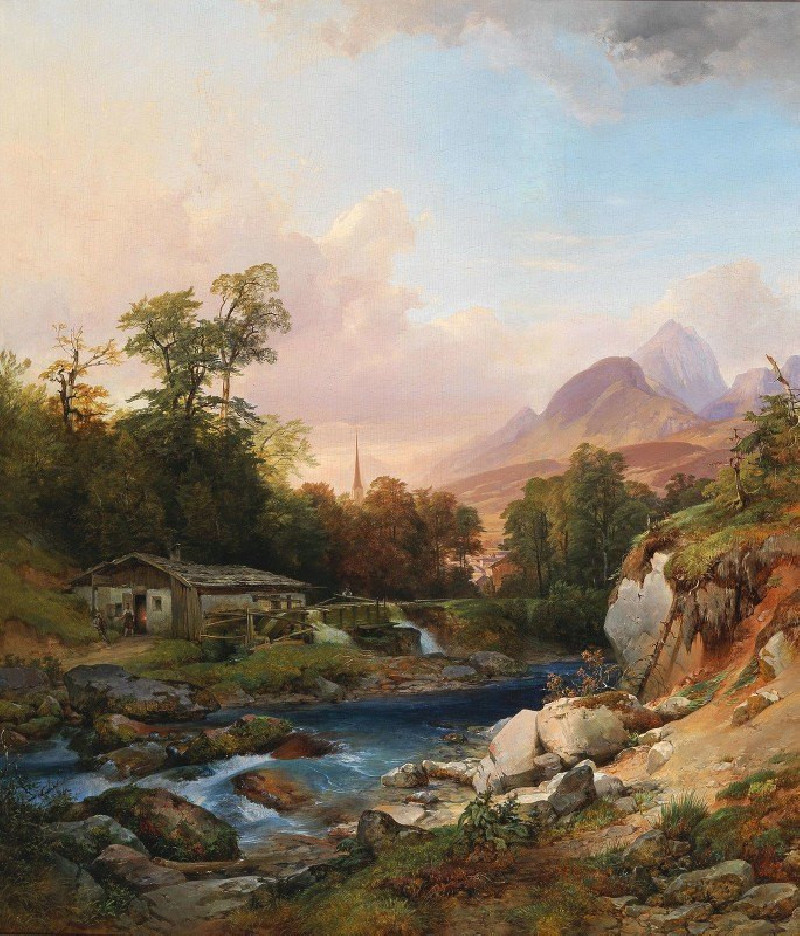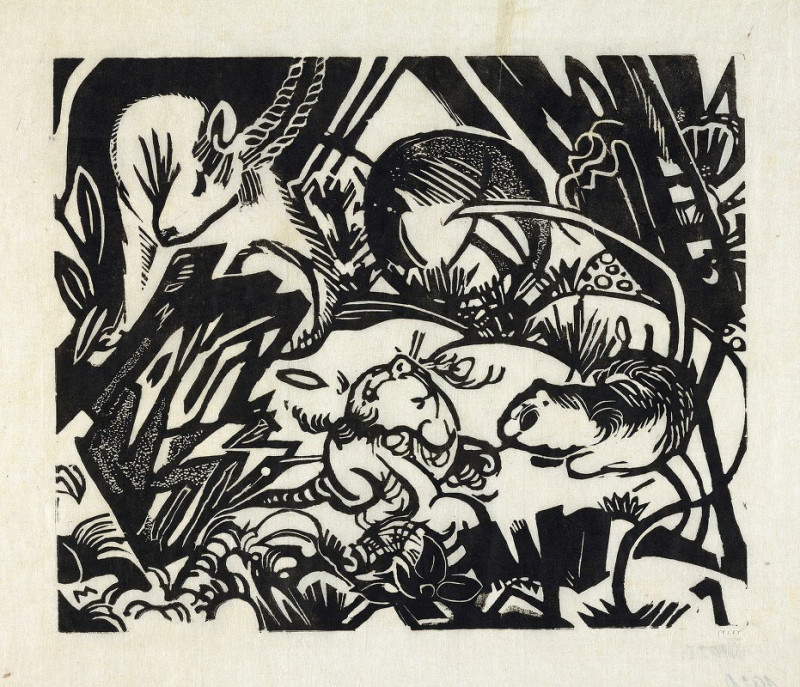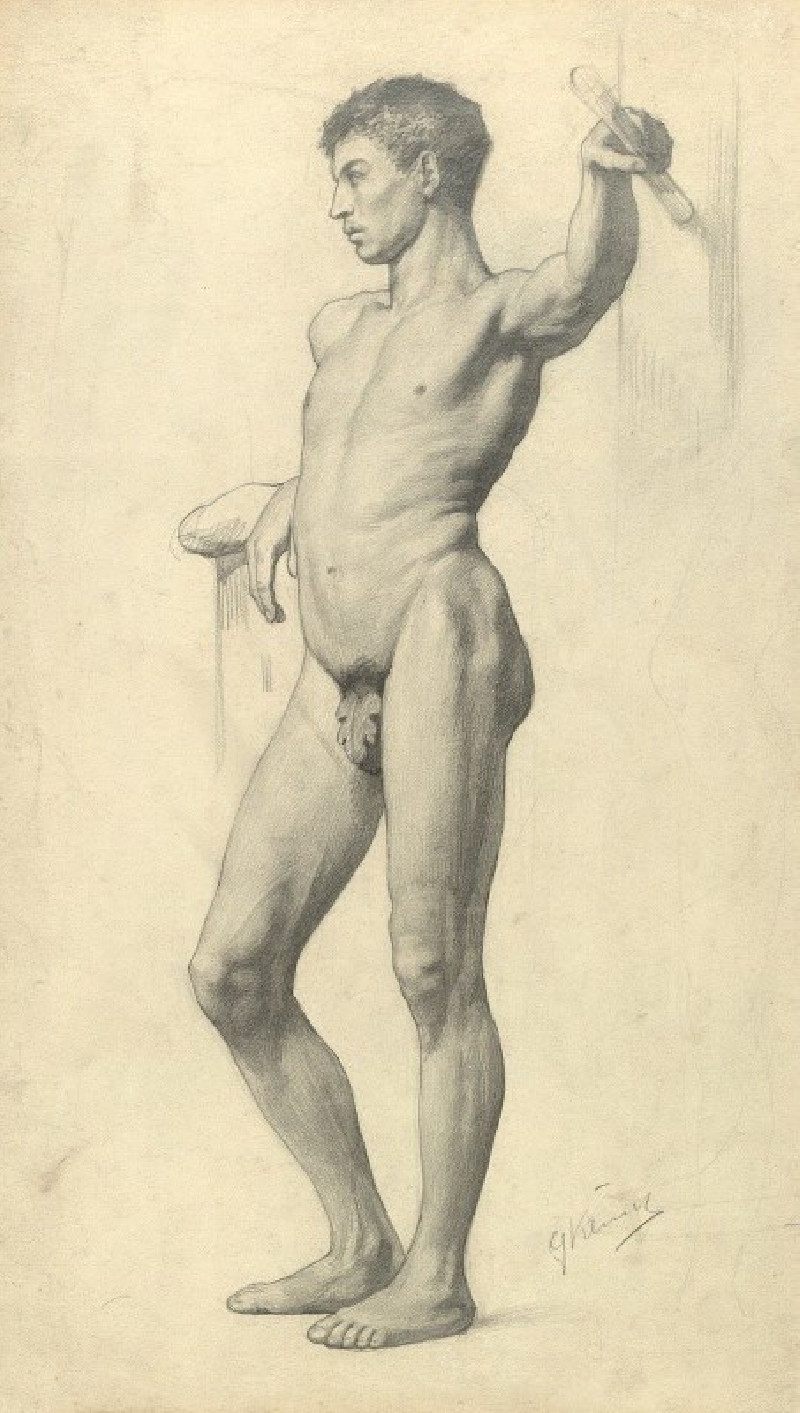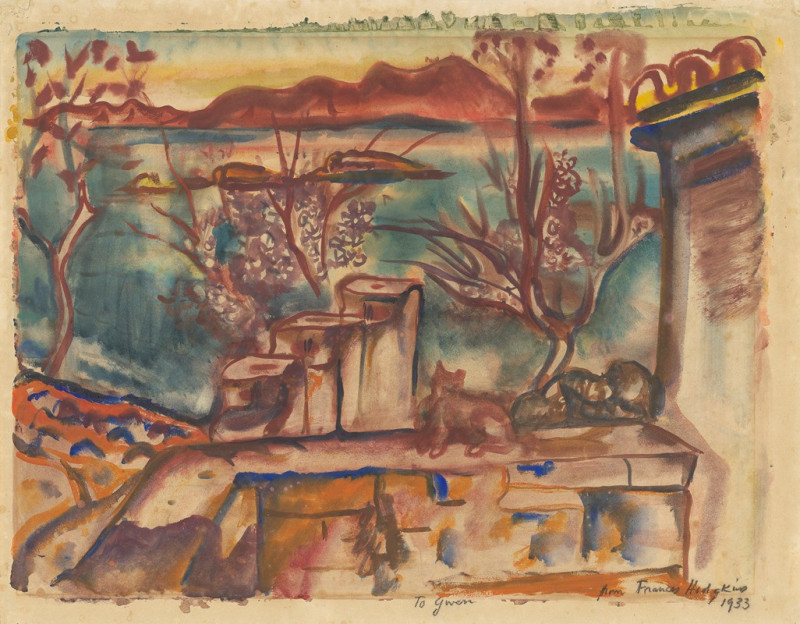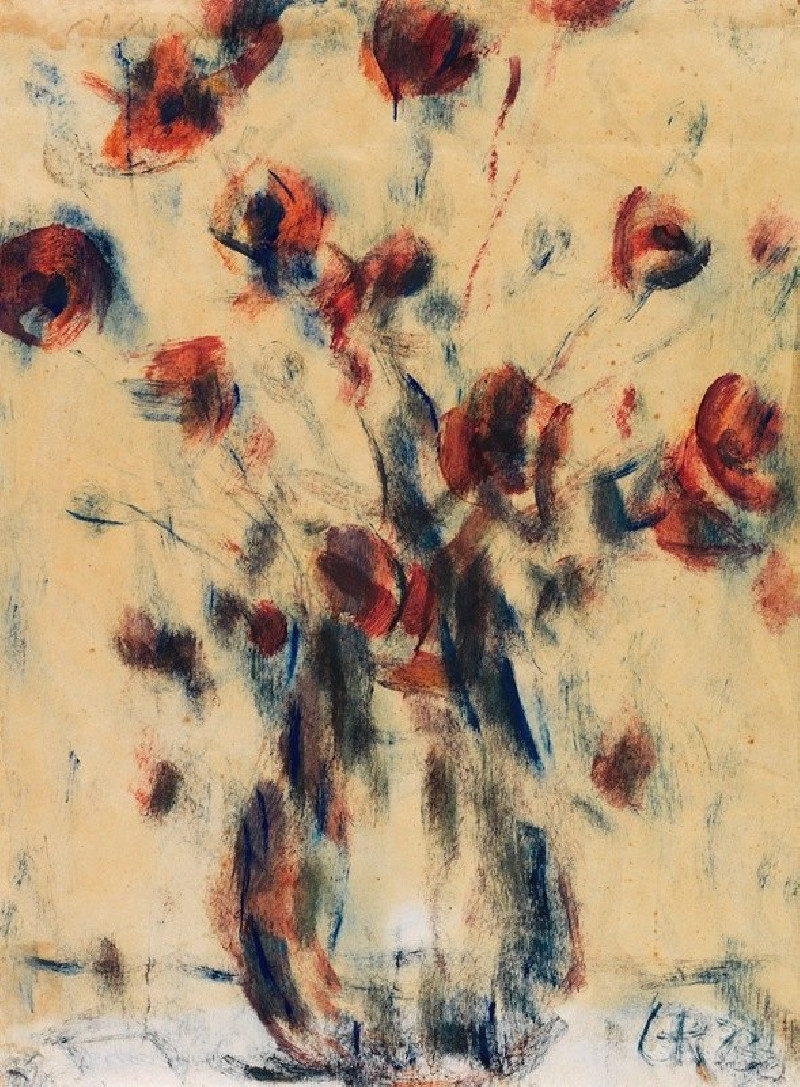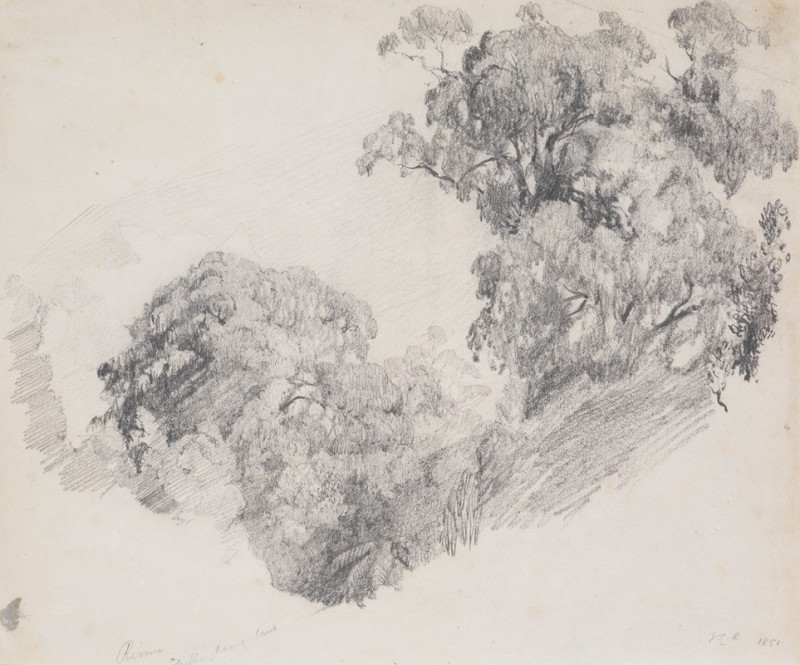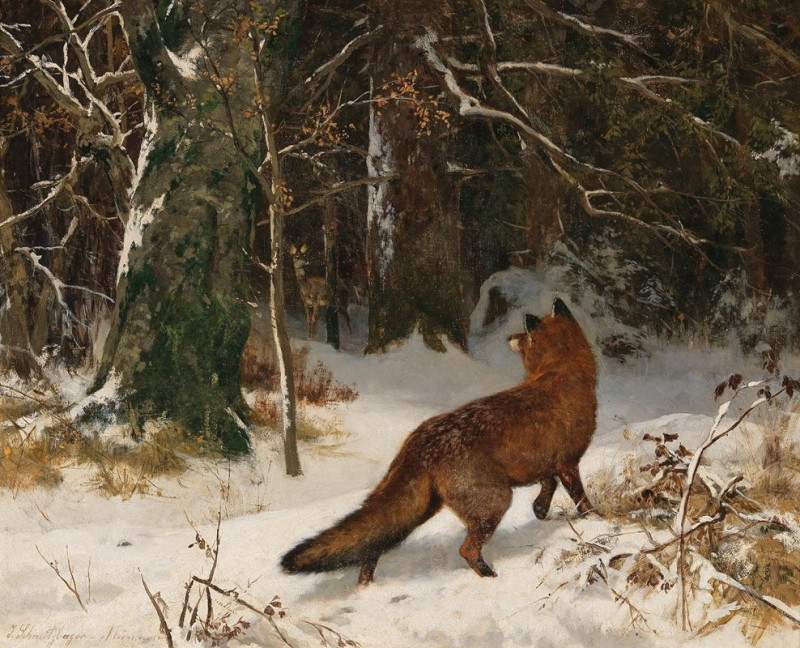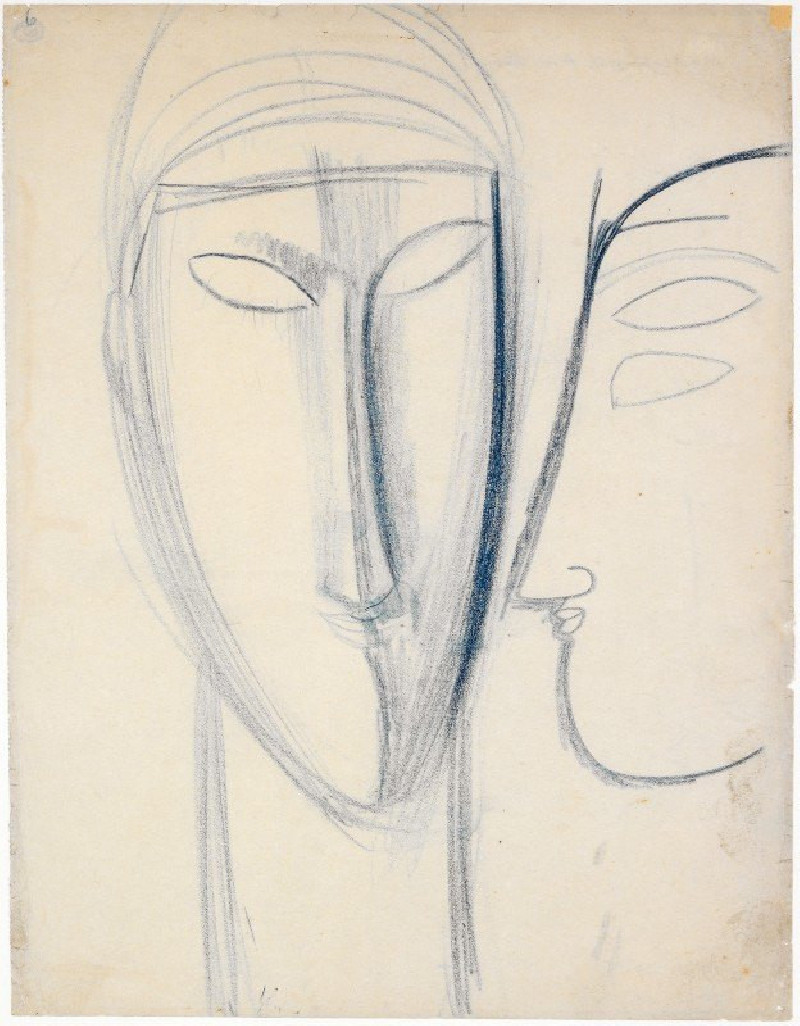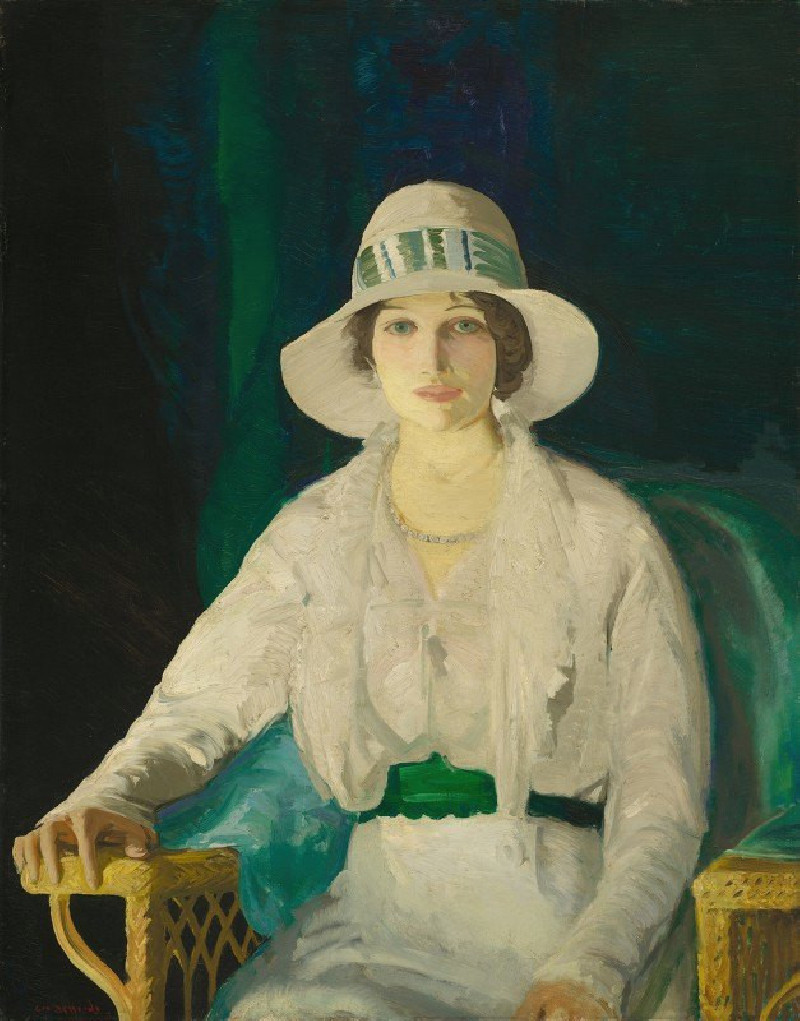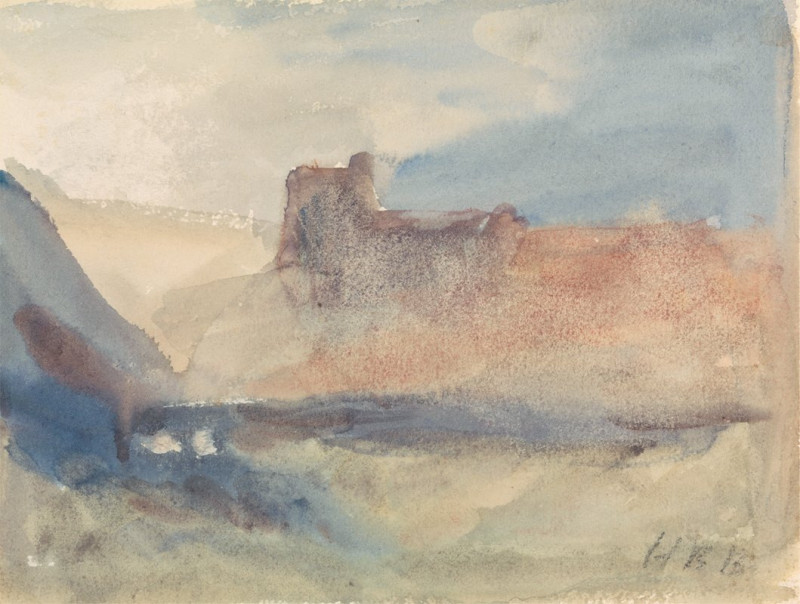Refugiés (circa 1918)
Technique: Giclée quality print
Recommended by our customers
More about this artwork
Théophile Alexandre Steinlen’s artwork "Refugiés," created around 1918, presents a poignant visualization of the hardships and emotional turmoil faced by refugees during and after World War I. This drawing, characteristically rendered in Steinlen's empathetic and expressive style, encapsulates the themes of displacement and human suffering.In the foreground, three figures dominate the scene: a woman clasping a young child and another slightly older child, huddled closely together. The woman, who occupies the central position, carries a look of weary resilience. Clad in modest clothing, which drapes and folds around them, these figures are depicted with fine, sensitive line work that emphasizes their fragile state. The weariness in their eyes contrasts with their otherwise composed appearances, hinting at the silent strength that has carried them through unspeakable trials.Behind them looms a desolate cityscape, partially destroyed and devoid of life, representative of their lost home and the destruction that has forced them to flee. The inclusion of small, sketch-like figures in the bottom right corner — also in motion — underscores the mass movement and collective struggle of displaced communities.Steinlen's choice of soft but firm lines, along with minimal yet effective use of color, highlights the main subjects, drawing viewers' eyes directly to the emotional core of the drawing: the faces of the refugees. The subtle interplay of determination and despair invites viewers to reflect on the ongoing global relevance of such scenes.This compelling piece by Steinlen not only captures a historical moment but also resonates with contemporary issues, reminding us of the enduring human spirit in the face of adversity.
Delivery
Returns
Théophile Alexandre Steinlen, was a Swiss-born French Art Nouveau painter and printmaker.
Born in Lausanne, Steinlen studied at the University of Lausanne before taking a job as a designer trainee at a textile mill in Mulhouse in eastern France. In his early twenties he was still developing his skills as a painter when he and his wife Emilie were encouraged by the painter François Bocion to move to the artistic community in the Montmartre Quarter of Paris. Once there, Steinlen was befriended by the painter Adolphe Willette who introduced him to the artistic crowd at Le Chat Noir that led to his commissions to do poster art for the cabaret owner/entertainer, Aristide Bruant and other commercial enterprises.

